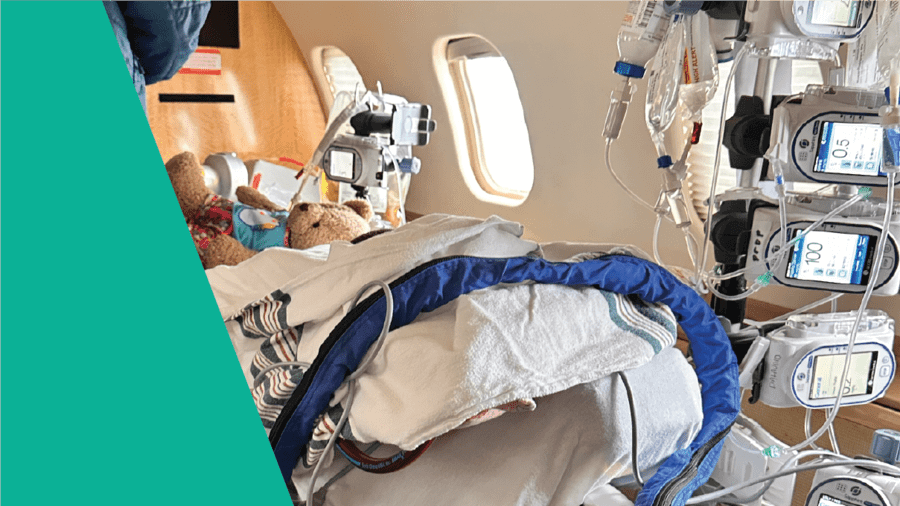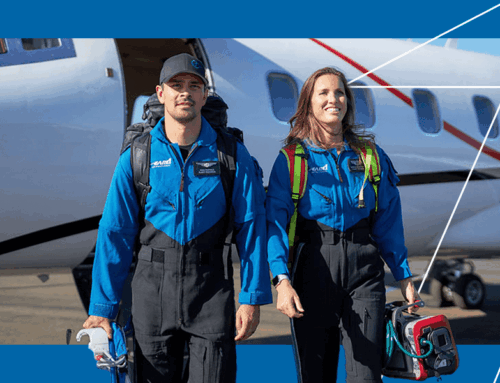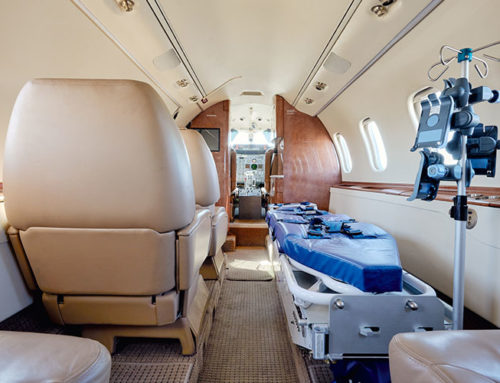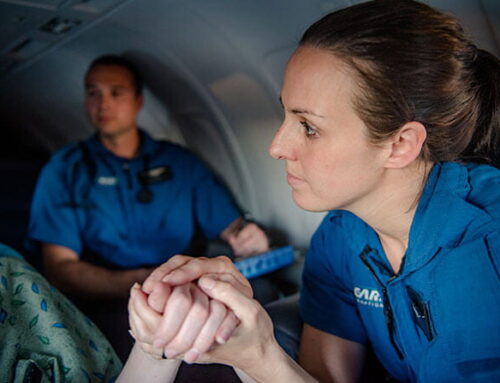Case Study: AirCARE1 transported a child for a lung transplant under the most challenging conditions
Background
AirCARE1 was tasked with a high-acuity mission: transporting a critically ill pediatric ECMO patient from a rural hospital in Delaware to a tertiary care center in Ohio. The patient-a 7-year-old girl newly diagnosed with MDA5+ autoimmune disease—experienced a rapid and devastating decline. This rare disorder triggers the production of antibodies against the MDA5 protein, causing severe inflammation and lung damage.
Within days, she developed acute respiratory distress syndrome (ARDS), multiple pneumothoraces, and worsening respiratory failure. Despite intubation and mechanical ventilation, her condition deteriorated, requiring veno-venous extracorporeal membrane oxygenation (VV ECMO) to sustain her life.
Overcoming Operational Challenges
Pediatric ECMO transports are one of the most high-stakes missions in medicine, where even the smallest disruption can have serious consequences. It requires seamless teamwork, precise communication, and expert knowledge in both critical care and aviation.
For this mission, AirCARE1 partnered with a specialized ECMO transport team, uniting their expertise into a single, coordinated unit. Four highly trained professionals were mobilized to ensure the success of this mission.
The mission was launched at night under urgent conditions. Since night flights present increased challenges, risk mitigation was utilized to ensure peak performance of the flight and medical teams.
Additionally, severe weather in the area where the patient was to be picked up required a change to an airport that was further away from the facility. This unexpected change significantly increased ground time during which time the patient would have an increased exposure to additional stressors, all of which could influence the patient’s stability.
Clinical Assessment and Preparation
At the sending facility, the AirCARE1 team received a detailed report. The patient was trached and ventilated on rest settings, sedated, paralyzed, and tethered to seven life- preserving IV medications. The team cannulated her for VV ECMO, an arduous, high-risk procedure demanding absolute precision and meticulous handling of blood products.
Because she was being transported in hopes of a lung transplant, The “rest settings” allow the ECMO circuit to perform the gas exchange function giving her lungs a chance to recover. The system continuously removed carbon dioxide and delivered oxygen-rich blood back into her body, acting as a bridge to potential transplant.
Working in unison, the team prepared the patient for transport, securing every line, reinforcing every monitor, and triple-checking every life-support system. The patient was stabilized and ready for safe movement and a controlled flight.
En Route Care
Transporting a High-acuity pediatric on ECMO is a mission with zero margin for error. Every life-support system was backed by a duplicate. The team carried backup ventilators, ECMO components, infusion pumps, pre-prepared emergency medications, blood products, oxygen reserves, and advanced airway equipment.
Though the flight itself lasted under an hour, the greatest challenge was managing the patient during extended ground intervals, navigating her through weather, environmental shifts, and multiple equipment transitions without a single lapse in life-sustaining support.
Outcome
This mission highlights the power of interdisciplinary collaboration, meticulous planning, and adaptability under pressure. By integrating AirCARE1’s critical care expertise with a specialized ECMO team, the transport overcame significant logistical and clinical challenges. Through precise coordination and unwavering focus on patient stability, the teams delivered the patient safely to the receiving facility—demonstrating that collaboration is often a critical factor in even the most emergent and complex cases.
Read the article on ITIJ’s website or read the digital issue here.




